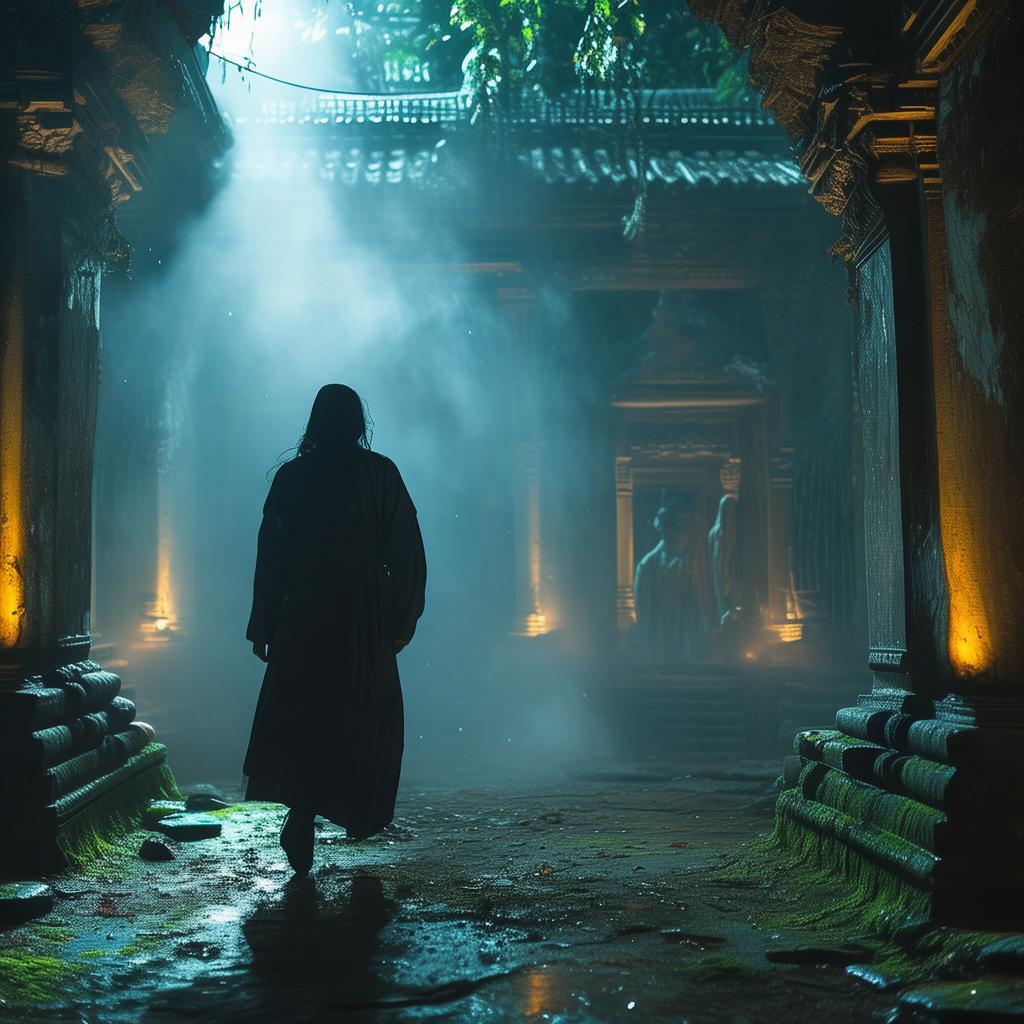Whispers from the Frame: A Lens into the Departed
The small town of Eldridge was a quaint, picturesque place, with its cobblestone streets and historic buildings that whispered tales of the past. Among them stood the old Victorian house at the corner of Maple and Pine, its windows often shrouded in shadows, as if they held secrets too dark to be spoken. It was there, in the attic, that young photographer Eliza had found an old, dusty camera, one that seemed to have a life of its own.
Eliza was an avid photographer, always seeking to capture the beauty and mystery of the world around her. The camera, with its ornate brass and intricate woodwork, had caught her eye as she rummaged through the attic's clutter. It was unlike any modern camera she had seen, and the way it seemed to beckon her was inexplicable.
Curiosity piqued, Eliza cleaned the camera with a gentle touch, revealing the name "Evelyn" etched into the brass. She had heard whispers about the house, stories of a woman who had once lived there, a woman who had vanished without a trace. Could the camera be connected to her disappearance?
As the days passed, Eliza began to notice something strange. When she took photographs with the camera, something was always there in the background—ghostly figures, flickering lights, and shadows that moved on their own. The more she photographed, the more intense and detailed the images became.
One evening, as the sun dipped below the horizon, casting a golden glow over the town, Eliza set up her camera on the back porch of the house. She had decided to take a series of night shots, hoping to capture the ethereal beauty she had seen in the previous photographs. As she focused the lens, she heard a soft, whispering sound, as if the wind were carrying voices on its breath.
"Eliza," the voice was faint, barely audible, yet it cut through the silence like a knife. "Eliza, you must listen to me."
Startled, Eliza checked her camera, but the lens was clear. She looked around, but the porch was empty. Could it have been her imagination? Or perhaps the camera itself was whispering to her?
The next morning, Eliza reviewed the photographs she had taken. There, in the background, was a woman's face, a face that bore a striking resemblance to Evelyn. The image was so clear and detailed that Eliza could see the woman's eyes, her lips moving as if she were speaking directly to her.
Intrigued and unnerved, Eliza began to research Evelyn's life. She discovered that Evelyn had been a local artist, known for her hauntingly beautiful paintings. She had been last seen in the house, working on a painting that had never been completed. There were rumors that the painting was cursed, that it held the key to Evelyn's disappearance.

Eliza decided to venture deeper into the mystery, taking more photographs and hoping to capture the essence of Evelyn's story. Each photograph seemed to bring her closer to the truth, but also to the danger that lay ahead. The whispers grew louder, the images clearer, and the shadows darker.
One night, as Eliza sat in the attic, the camera in her hands, she heard a knock at the door. She rushed to answer, expecting to find a curious neighbor or perhaps a local historian interested in the house. Instead, there stood a woman, her eyes hollow and her face pale, her hands trembling as she clutched a small, ornate box.
"Eliza," the woman's voice was weak but insistent, "I need your help."
Before Eliza could respond, the woman collapsed, her body vanishing into a whirlwind of shadows. The box, however, remained, its surface glowing faintly. Eliza opened it to find a painting, the same painting she had seen in her photographs. As she touched the canvas, she felt a surge of energy, a connection to Evelyn and her story.
In the days that followed, Eliza worked tirelessly, photographing the painting, capturing the emotions and memories that seemed to flow from it. The photographs became more vivid, more real, as if they were windows into another world. Eliza began to feel a strange connection to Evelyn, as if they were sharing a bond, a connection that transcended time and space.
As the final photograph was taken, Eliza felt a sense of peace wash over her. The woman, Evelyn, had found her voice through Eliza's lens. The painting was complete, and with it, Evelyn's story was told.
Eliza returned the camera to the attic, leaving it where she had found it, a silent witness to the mystery that had unfolded. The camera had been a lens into the beyond, a window through which she had seen the unseen, and into the lives of those who had walked before her.
The photographs remained, a haunting collection of images that seemed to tell a story of love, loss, and the enduring power of memory. Eliza knew that the camera had brought her closer to the truth, but also to the mystery that would always surround the old Victorian house and the woman who had once lived there.
And so, the story of Evelyn and the camera that captured her essence continued to whisper through the cobblestone streets of Eldridge, a reminder that some secrets are meant to be shared, even after death.
✨ Original Statement ✨
All articles published on this website (including but not limited to text, images, videos, and other content) are original or authorized for reposting and are protected by relevant laws. Without the explicit written permission of this website, no individual or organization may copy, modify, repost, or use the content for commercial purposes.
If you need to quote or cooperate, please contact this site for authorization. We reserve the right to pursue legal responsibility for any unauthorized use.
Hereby declared.









